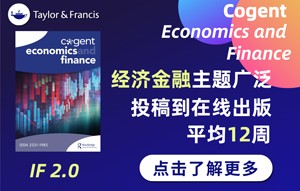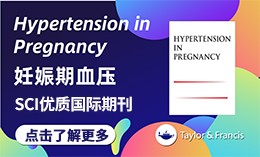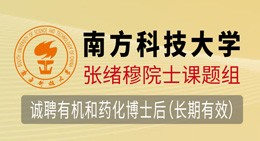样式: 排序: IF: - GO 导出 标记为已读
-
Defining a chromatin architecture that supports transcription at RNA polymerase II promoters J. Biol. Chem. (IF 4.0) Pub Date : 2024-06-28 Michael J. Fisher, Donal S. Luse
Mammalian RNA polymerase II preinitiation complexes assemble adjacent to a nucleosome whose proximal edge (NPE) is typically 40 to 50 bp downstream of the transcription start site. At active promoters, that +1 nucleosome is universally modified by trimethylation on lysine 4 of histone H3 (H3K4me3). The Pol II preinitiation complex only extends 35 bp beyond the transcription start site, but nucleosomal
-
Mechanism and spectrum of inhibition of a 4′-cyano modified nucleotide analog against diverse RNA polymerases of prototypic respiratory RNA viruses J. Biol. Chem. (IF 4.0) Pub Date : 2024-06-28 Calvin J. Gordon, Simon M. Walker, Egor P. Tchesnokov, Dana Kocincova, Jared Pitts, Dustin S. Siegel, Jason K. Perry, Joy Y. Feng, John P. Bilello, Matthias Götte
The development of safe and effective broad-spectrum antivirals that target the replication machinery of respiratory viruses is of high priority in pandemic preparedness programs. Here, we studied the mechanism of action of a newly discovered nucleotide analog against diverse RNA-dependent RNA polymerases (RdRps) of prototypic respiratory viruses. GS-646939 is the active 5′-triphosphate metabolite
-
In-depth mapping of DNA-PKcs signaling uncovers noncanonical features of its kinase specificity J. Biol. Chem. (IF 4.0) Pub Date : 2024-06-28 Shannon Marshall, Marcos V.A.S. Navarro, Carolline F.R. Ascenҫão, Diego Dibitetto, Marcus B. Smolka
DNA-PKcs is a DNA damage sensor kinase with established roles in DNA double-strand break repair nonhomologous end joining. Recent studies have revealed additional roles of DNA-PKcs in the regulation of transcription, translation, and DNA replication. However, the substrates through which DNA-PKcs regulates these processes remain largely undefined. Here, we utilized quantitative phosphoproteomics to
-
A structural perspective of how T cell receptors recognize the CD1 family of lipid antigen–presenting molecules J. Biol. Chem. (IF 4.0) Pub Date : 2024-06-28 Thinh-Phat Cao, Adam Shahine, Liam R. Cox, Gurdyal S. Besra, D. Branch Moody, Jamie Rossjohn
The CD1 family of antigen-presenting molecules adopt a major histocompatibility complex class I (MHC-I) fold. Whereas MHC molecules present peptides, the CD1 family has evolved to bind self- and foreign-lipids. The CD1 family of antigen-presenting molecules comprises four members—CD1a, CD1b, CD1c, and CD1d—that differ in their architecture around the lipid-binding cleft, thereby enabling diverse lipids
-
Identification and biophysical characterization of a novel domain-swapped camelid antibody specific for fentanyl J. Biol. Chem. (IF 4.0) Pub Date : 2024-06-28 Joseph P. Gallant, Dustin Hicks, Ke Shi, Nicholas H. Moeller, Brooke Hoppe, Eric W. Lake, Carly Baehr, Marco Pravetoni, Hideki Aihara, Aaron M. LeBeau
Opioid use disorders (OUD) and overdoses are ever-evolving public health threats that continue to grow in incidence and prevalence in the United States and abroad. Current treatments consist of opioid receptor agonists and antagonists, which are safe and effective but still suffer from some limitations. Murine and humanized monoclonal antibodies (mAb) have emerged as an alternative and complementary
-
Vascular syk-ness: A new role for an old immunological favorite J. Biol. Chem. (IF 4.0) Pub Date : 2024-06-28 Robert Fischer
-
Shy is a proteobacterial steroid hydratase which catalyzes steroid side chain degradation without requiring a catalytically inert partner domain J. Biol. Chem. (IF 4.0) Pub Date : 2024-06-27 Kurt L. Schroeter, Nicolas Rolfe, Taylor JB. Forrester, Matthew S. Kimber, Stephen YK. Seah
Shy (side chain hydratase) and Sal (side chain aldolase), are involved in successive reactions in the pathway of bile acid side chain catabolism in Proteobacteria. Untagged Shy copurified with His-tagged Sal indicating that the two enzymes form a complex. Shy contains a MaoC and a DUF35 domain. When coexpressed with Sal, the DUF35 domain but not the MaoC domain of Shy was observed to copurify with
-
Acetylation of WCC is dispensable for the core circadian clock but differentially regulates acute light responses in Neurospora J. Biol. Chem. (IF 4.0) Pub Date : 2024-06-27 Bin Wang, Mark E. Adamo, Xiaoying Zhou, Ziyan Wang, Scott A. Gerber, Arminja N. Kettenbach, Jay C. Dunlap
In the circadian system, the White Collar Complex (WCC) formed by WC-1 and WC-2 drives expression of the () gene whose product FRQ feedbacks to inhibit transcriptional activity of WCC. Phosphorylation of WCC has been extensively studied, but the extent and significance of other post-translational modifications (PTM) has been poorly studied. To this end, we used mass-spectrometry to study alkylation
-
Epitope-specific antibody fragments block aggregation of AGelD187N, an aberrant peptide in gelsolin amyloidosis J. Biol. Chem. (IF 4.0) Pub Date : 2024-06-27 Laura Leimu, Patrik Holm, Anna Gąciarz, Oskar Haavisto, Stuart Prince, Ullamari Pesonen, Tuomas Huovinen, Urpo Lamminmäki
Aggregation of aberrant fragment of plasma gelsolin, AGelD187N, is a crucial event underlying the pathophysiology of Finnish gelsolin amyloidosis, an inherited form of systemic amyloidosis. The amyloidogenic gelsolin fragment AGelD187N does not play any physiological role in the body, unlike most aggregating proteins related to other protein misfolding diseases. However, no therapeutic agents that
-
Escherichia coli monothiol glutaredoxin GrxD replenishes Fe-S clusters to the essential ErpA A-type carrier under low iron stress J. Biol. Chem. (IF 4.0) Pub Date : 2024-06-27 Claire E. Fisher, Daniel W. Bak, Kennedy E. Miller, Clorissa L. Washington-Hughes, Anna M. Dickfoss, Eranthie Weerapana, Béatrice Py, F. Wayne Outten
Iron-sulfur (Fe-S) clusters are required for essential biological pathways, including respiration and isoprenoid biosynthesis. Complex Fe-S cluster biogenesis systems have evolved to maintain an adequate supply of this critical protein cofactor. In two Fe-S biosynthetic systems, the “housekeeping” Isc and “stress responsive” Suf pathways, interface with a network of cluster trafficking proteins, such
-
ArcS from Thermococcus kodakarensis transfers L-lysine to preQ0 nucleoside derivatives as minimum substrate RNAs J. Biol. Chem. (IF 4.0) Pub Date : 2024-06-27 Shu Fujita, Yuzuru Sugio, Takuya Kawamura, Ryota Yamagami, Natsuhisa Oka, Akira Hirata, Takashi Yokogawa, Hiroyuki Hori
Archaeosine (G) is an archaea-specific tRNA modification synthesized multiple steps. In the first step, archaeosine tRNA guanine transglucosylase (ArcTGT) exchanges the G15 base in tRNA with 7-cyano-7-deazaguanine (preQ). In Euryarchaea, preQ15 in tRNA is further modified by archaeosine synthase (ArcS). ArcS catalyzes a lysine-transfer reaction to produce preQ-lysine (preQ-Lys) as an intermediate.
-
Novel Z-DNA binding domains in giant viruses J. Biol. Chem. (IF 4.0) Pub Date : 2024-06-27 Miguel F. Romero, Jeffrey B. Krall, Parker J. Nichols, Jillian Vantreeck, Morkos A. Henen, Emmanuel Dejardin, Frederik Schulz, Quentin Vicens, Beat Vögeli, Mamadou Amadou Diallo
Z-nucleic acid structures play vital roles in cellular processes and have implications in innate immunity due to their recognition by Zα domains containing proteins (Z-DNA/Z-RNA binding proteins, ZBPs). Although Zα domains have been identified in six proteins, including viral E3L, ORF112, and I73R, as well as, cellular ADAR1, ZBP1, and PKZ, their prevalence across living organisms remains largely unexplored
-
An alcove at the acetyl-CoA synthase nickel active site is required for productive substrate CO binding and anaerobic carbon fixation J. Biol. Chem. (IF 4.0) Pub Date : 2024-06-27 Seth Wiley, Claire Griffith, Peter Eckert, Alexander P. Mueller, Robert Nogle, Séan D. Simpson, Michael Köpke, Mehmet Can, Ritimukta Sarangi, Kevin Kubarych, Stephen W. Ragsdale
One of the seven natural CO fixation pathways, the anaerobic Wood-Ljungdahl pathway (WLP) is unique in generating CO as a metabolic intermediate, operating through organometallic intermediates, and in conserving ( utilizing) net ATP. The key enzyme in the WLP is acetyl-CoA synthase (ACS), which uses an active site [2Ni-4Fe-4S] cluster (A-cluster), a CO tunnel, and an organometallic (Ni-CO, Ni-methyl
-
Hydroxysteroid 17-β dehydrogenase 14 is an L-fucose dehydrogenase, the initial enzyme of the L-fucose degradation pathway J. Biol. Chem. (IF 4.0) Pub Date : 2024-06-27 Apolonia Witecka, Varvara Kazak, Sebastian Kwiatkowski, Anna Kiersztan, Adam K. Jagielski, Wiktor Kozminski, Rafal Augustyniak, Jakub Drozak
L-Fucose (6-deoxy-L-galactose), a monosaccharide abundant in glycolipids and glycoproteins produced by mammalian cells, has been extensively studied for its role in intracellular biosynthesis and recycling of GDP-L-fucose for fucosylation. However, in certain mammalian species, L-fucose is efficiently broken down to pyruvate and lactate in a poorly understood metabolic pathway. In the 1970s, L-fucose
-
A proposed pathway from D-glucose to D-arabinose in eukaryotes J. Biol. Chem. (IF 4.0) Pub Date : 2024-06-27 Elda Iljazi, Rupa Nagar, Sabine Kuettel, Kieron Lucas, Arthur Crossman, Marie-Ange Badet-Denisot, Ronald W. Woodard, Michael A.J. Ferguson
In eukaryotes, the D-enantiomer of arabinose (D-Ara) is an intermediate in the biosynthesis of D-erythroascorbate in yeast and fungi and in the biosynthesis of the nucleotide sugar GDP-α-D-arabino (GDP-D-Ara) and complex α-D-Ara–containing surface glycoconjugates in certain trypanosomatid parasites. Whereas the biosynthesis of D-Ara in prokaryotes is well understood, the route from D-glucose (D-Glc)
-
ErbB3 is required for hyperaminoacidemia-induced pancreatic α cell hyperplasia J. Biol. Chem. (IF 4.0) Pub Date : 2024-06-27 Qi Kang, Jianxin Jia, E Danielle Dean, Hang Yuan, Chunhua Dai, Zhehui Li, Fuquan Jiang, Xiao-Kun Zhang, Alvin C. Powers, Wenbiao Chen, Mingyu Li
Blood amino acid levels are maintained in a narrow physiological range. The pancreatic α cells have emerged as the primary aminoacidemia regulator through glucagon secretion to promote hepatic amino acid catabolism. Interruption of glucagon signaling disrupts the liver–α cells axis leading to hyperaminoacidemia, which triggers a compensatory rise in glucagon secretion and α cell hyperplasia. The mechanisms
-
Bridging lipid metabolism and mitochondrial genome maintenance J. Biol. Chem. (IF 4.0) Pub Date : 2024-06-27 Casadora Boone, Samantha C. Lewis
Mitochondria are the nexus of cellular energy metabolism and major signaling hubs that integrate information from within and without the cell to implement cell function. Mitochondria harbor a distinct polyploid genome, mitochondrial DNA (mtDNA), that encodes respiratory chain components required for energy production. MtDNA mutation and depletion have been linked to obesity and metabolic syndrome in
-
Inhibition of BACE1 affected both its Aβ producing and degrading activities and increased Aβ42 and Aβ40 levels at high-level BACE1 expression J. Biol. Chem. (IF 4.0) Pub Date : 2024-06-27 Irem Ulku, Rocher Leung, Fritz Herre, Lina Walther, Adeola Shobo, Paul Saftig, Mark A. Hancock, Filip Liebsch, Gerhard Multhaup
The beta-site amyloid precursor protein cleaving enzyme 1 (BACE1) is the predominant β-secretase, cleaving the amyloid precursor protein (APP) the amyloidogenic pathway. In addition, BACE1 as an amyloid degrading enzyme (ADE), cleaves Aβ to produce the C-terminally truncated non-toxic Aβ fragment Aβ34 which is an indicator of amyloid clearance. Here, we analyzed the effects of BACE1 inhibitors on its
-
Interaction networks within disease-associated GαS variants characterized by an integrative biophysical approach J. Biol. Chem. (IF 4.0) Pub Date : 2024-06-24 Kara Anazia, Lucien Koenekoop, Guillaume Ferré, Enzo Petracco, Hugo Gutiérrez-de-Teran, Matthew T. Eddy
Activation of G proteins through nucleotide exchange initiates intracellular signaling cascades essential for life processes. Under normal conditions, nucleotide exchange is regulated by the formation of G protein–G protein–coupled receptor complexes. Single point mutations in the Gα subunit of G proteins bypass this interaction, leading to loss of function or constitutive gain of function, which is
-
Prefoldins are novel regulators of the unfolded protein response in artemisinin resistant Plasmodium falciparum malaria J. Biol. Chem. (IF 4.0) Pub Date : 2024-06-24 Rumaisha Shoaib, Nidha Parveen, Vikash Kumar, Ankita Behl, Swati Garg, Preeti Chaudhary, Devasahayam Arokia Balaya Rex, Monika Saini, Preeti Maurya, Ravi Jain, Kailash C. Pandey, Mohammad Abid, Shailja Singh
Emerging Artemisinin (ART) resistance in () poses challenges for the discovery of novel drugs to tackle ART-resistant parasites. Concentrated efforts toward the ART resistance mechanism indicated a strong molecular link of ART resistance with upregulated expression of unfolded protein response pathways involving Prefoldins (PFDs). However, a complete characterization of PFDs as molecular players taking
-
Structural and thermodynamic characterization of a highly amyloidogenic dimer of transthyretin involved in a severe cardiomyopathy J. Biol. Chem. (IF 4.0) Pub Date : 2024-06-24 Lucas do Amaral Martins, Priscila S. Ferreira, Otávio Augusto Leitão dos Santos, Leticia Oliveira Martins, Luiz Gabriel Cabral Fernandes Barroso, Humberto M. Pereira, Márcia Waddington-Cruz, Fernando Lucas Palhano, Debora Foguel
Transthyretin (TTR) is a homotetrameric protein involved in the transport of thyroxine. More than 150 different mutations have been described in the TTR gene, several of them associated with familial amyloid cardiomyopathy. Recently, our group described a new variant of TTR in Brazil, namely A39D-TTR, which causes a severe cardiac condition. Position 39 is in the AB loop, a region of the protein that
-
Systematic transcriptome profiling of hPSC-derived osteoblasts unveils CORIN's mastery in governing osteogenesis through CEBPD modulation J. Biol. Chem. (IF 4.0) Pub Date : 2024-06-24 Dandan Zhu, Mo-Fan Huang, An Xu, Xueqin Gao, Yu-Wen Huang, Trinh T.T. Phan, Linchao Lu, Ting-Yen Chi, Yulin Dai, Lon Kai Pang, Julian A. Gingold, Jian Tu, Zijun Huo, Danielle A. Bazer, Rachel Shoemaker, Jun Wang, Catherine G. Ambrose, Jingnan Shen, Jun Kameoka, Zhongming Zhao, Lisa L. Wang, Yang Zhang, Ruiying Zhao, Dung-Fang Lee
The commitment of stem cells to differentiate into osteoblasts is a highly regulated and complex process that involves the coordination of extrinsic signals and intrinsic transcriptional machinery. While rodent osteoblastic differentiation has been extensively studied, research on human osteogenesis has been limited by cell sources and existing models. Here, we systematically dissect human pluripotent
-
Low molecular weight heparin promotes the PPAR pathway by protecting the glycocalyx of cells to delay the progression of diabetic nephropathy J. Biol. Chem. (IF 4.0) Pub Date : 2024-06-24 Bin Zhang, Changkai Bu, Qingchi Wang, Qingqing Chen, Deling Shi, Hongyan Qiu, Zhangjie Wang, Jian Liu, Zhe Wang, Qunye Zhang, Lianli Chi
Diabetic nephropathy (DN) is one of the most important comorbidities for diabetic patients, which is the main factor leading to end-stage renal disease. Heparin analogs can delay the progression of DN, but the mechanism is not fully understood. In this study, we found that low molecular weight heparin therapy significantly upregulated some downstream proteins of the peroxisome proliferator–activated
-
Lack of mismatch repair enhances resistance to methylating agents for cells deficient in oxidative demethylation J. Biol. Chem. (IF 4.0) Pub Date : 2024-06-24 Roberto Gutierrez, Annie Yin Chan, Seigmund Wai Tsuen Lai, Shunsuke Itoh, Dong-Hyun Lee, Kelani Sun, Alana Battad, Shiuan Chen, Timothy R. O’Connor, Sarah C. Shuck
The human alkylation B (AlkB) homologs, ALKBH2 and ALKBH3, respond to methylation damage to maintain genomic integrity and cellular viability. Both ALKBH2 and ALKBH3 are direct reversal repair enzymes that remove 1-methyladenine (1meA) and 3-methylcytosine (3meC) lesions commonly generated by alkylating chemotherapeutic agents. Thus, the existence of deficiencies in ALKBH proteins can be exploited
-
14-3-3ζ suppresses RANKL signaling by destabilizing TRAF6 J. Biol. Chem. (IF 4.0) Pub Date : 2024-06-21 R. Ayyasamy, S. Fan, P. Czernik, B. Lecka-Czernik, S. Chattopadhyay, R. Chakravarti
Macrophages are essential regulators of inflammation and bone loss. Receptor activator of nuclear factor-κβ ligand (RANKL), a pro-inflammatory cytokine, is responsible for macrophage differentiation to osteoclasts and bone loss. We recently showed that 14-3-3ζ-knockout () rats exhibit increased bone loss in the inflammatory arthritis model. 14-3-3ζ is a cytosolic adaptor protein that actively participates
-
The structure of the monobactam-producing thioesterase domain of SulM forms a unique complex with the upstream carrier protein domain J. Biol. Chem. (IF 4.0) Pub Date : 2024-06-20 Ketan D. Patel, Ryan A. Oliver, Michael S. Lichstrahl, Rongfeng Li, Craig A. Townsend, Andrew M. Gulick
Nonribosomal peptide synthetases (NRPSs) are responsible for the production of important biologically active peptides. The large, multidomain NRPSs operate through an assembly line strategy in which the growing peptide is tethered to carrier domains that deliver the intermediates to neighboring catalytic domains. While most NRPS domains catalyze standard chemistry of amino acid activation, peptide
-
RNA modifying enzymes shape tRNA biogenesis and function J. Biol. Chem. (IF 4.0) Pub Date : 2024-06-20 Sarah K. Schultz, Ute Kothe
Transfer RNAs (tRNAs) are the most highly modified cellular RNAs, both with respect to the proportion of nucleotides that are modified within the tRNA sequence and with respect to the extraordinary diversity in tRNA modification chemistry. However, the functions of many different tRNA modifications are only beginning to emerge. tRNAs have two general clusters of modifications. The first cluster is
-
WWC1 upregulation accelerates hyperuricemia by reduction in renal uric acid excretion through Hippo signaling pathway J. Biol. Chem. (IF 4.0) Pub Date : 2024-06-19 Changshun Han, Chengyong He, Xiaoyan Ding, Zixuan Li, Tianyun Peng, Chensong Zhang, Haibing Chen, Zhenghong Zuo, Jiyi Huang, Weiping Hu
Hyperuricemia (HUA) is a metabolic disorder characterized by elevated serum uric acid (UA), primarily attributed to the hepatic overproduction and renal underexcretion of UA. Despite the elucidation of molecular pathways associated with this underexcretion, the etiology of HUA remains largely unknown. In our study, using by knockout rats, HUA mouse, and cell line models, we discovered that the increased
-
Crosstalk of MAP3K1 and EGFR signaling mediates gene-environment interactions that block developmental tissue closure J. Biol. Chem. (IF 4.0) Pub Date : 2024-06-18 Jingjing Wang, Bo Xiao, Eiki Kimura, Maureen Mongan, Wei-Wen Hsu, Mario Medvedovic, Alvaro Puga, Ying Xia
Aberrant regulation of signal transduction pathways can adversely derail biological processes for tissue development. One such process is the embryonic eyelid closure that is dependent on the mitogen-activated protein kinase kinase kinase 1 (MAP3K1). KO in mice results in defective eyelid closure and an autosomal recessive eye-open at birth phenotype. We have shown that exposure to dioxin, a persistent
-
Decline in corepressor CNOT1 in the pregnant myometrium near term impairs progesterone receptor function and increases contractile gene expression J. Biol. Chem. (IF 4.0) Pub Date : 2024-06-18 Youn-Tae Kwak, Alina P. Montalbano, Andrew M. Kelleher, Mariano Colon-Caraballo, W. Lee Kraus, Mala Mahendroo, Carole R. Mendelson
Progesterone (P), acting via its nuclear receptor (PR), is critical for pregnancy maintenance by suppressing proinflammatory and contraction-associated protein ()/contractile genes in the myometrium. P/PR partially exerts these effects by tethering to NF-κB bound to their promoters, thereby decreasing NF-κB transcriptional activity. However, the underlying mechanisms whereby P/PR interaction blocks
-
Optical control of cell-surface and endomembrane-exclusive β-adrenergic receptor signaling J. Biol. Chem. (IF 4.0) Pub Date : 2024-06-18 Waruna Thotamune, Sithurandi Ubeysinghe, Kendra K. Shrestha, Mahmoud Elhusseiny Mostafa, Michael C. Young, Ajith Karunarathne
Beta-adrenergic receptors (βARs) are G protein–coupled receptors (GPCRs) that mediate catecholamine hormone-induced stress responses, such as elevation of heart rate. Besides those that are plasma membrane-bound, endomembrane βARs are also signaling competent. Dysregulation of βAR pathways underlies severe pathological conditions. Emerging evidence indicates pathological molecular signatures in deeper
-
Ubiquitination is involved in PKC-mediated degradation of cell surface Kv1.5 channels J. Biol. Chem. (IF 4.0) Pub Date : 2024-06-17 Ananya Chakraborty, Amanda Paynter, Mark Szendrey, James D. Cornwell, Wentao Li, Jun Guo, Tonghua Yang, Yuan Du, Tingzhong Wang, Shetuan Zhang
The voltage-gated Kv1.5 potassium channel, conducting the ultra-rapid delayed rectifier K current (I) in human cells, plays important roles in the repolarization of atrial action potentials and regulation of the vascular tone. We previously reported that activation of protein kinase C (PKC) by phorbol 12-myristate 13-acetate (PMA) induces endocytic degradation of cell-surface Kv1.5 channels, and a
-
Dissecting the abilities of murine Siglecs to interact with gangliosides J. Biol. Chem. (IF 4.0) Pub Date : 2024-06-17 Edward N. Schmidt, Xue Yan Guo, Duong T. Bui, Jaesoo Jung, John S. Klassen, Matthew S. Macauley
Siglecs are cell surface receptors whose functions are tied to the binding of their sialoglycan ligands. Recently, we developed an optimized liposome formulation and used it to investigate the binding of human Siglecs (hSiglec) against a panel of gangliosides. Animal models, more specifically murine models, are used to understand human biology; however, species-specific differences can complicate the
-
Ectodomain shedding of PLA2R1 is mediated by the metalloproteases ADAM10 and ADAM17 J. Biol. Chem. (IF 4.0) Pub Date : 2024-06-17 Guillaume Dolla, Sarah Nicolas, Ligia Ramos dos Santos, Alexandre Bourgeois, Raphaëlle Pardossi-Piquard, Franck Bihl, Christelle Zaghrini, Joana Justino, Christine Payré, Pascal Mansuelle, Christoph Garbers, Pierre Ronco, Frédéric Checler, Gérard Lambeau, Agnès Petit-Paitel
Phospholipase A2 receptor 1 (PLA2R1) is a 180-kDa transmembrane protein that plays a role in inflammation and cancer and is the major autoantigen in membranous nephropathy, a rare but severe autoimmune kidney disease. A soluble form of PLA2R1 has been detected in mouse and human serum. It is likely produced by proteolytic shedding of membrane-bound PLA2R1 but the mechanism is unknown. Here, we show
-
Glucoselysine, a unique advanced glycation end-product of the polyol pathway and its association with vascular complications in type 2 diabetes J. Biol. Chem. (IF 4.0) Pub Date : 2024-06-13 Hiroko Yamaguchi, Takeshi Matsumura, Hikari Sugawa, Naoko Niimi, Kazunori Sango, Ryoji Nagai
Glucoselysine (GL) is an unique advanced glycation end-product derived from fructose. The main source of fructose is the polyol pathway, and an increase in its activity leads to diabetic complications. Here, we aimed to demonstrate that GL can serve as an indicator of the polyol pathway activity. Additionally, we propose a novel approach for detecting GL in peripheral blood samples using liquid chromatography-tandem
-
Conservation of C4BP-binding sequence patterns in Streptococcus pyogenes M and Enn proteins J. Biol. Chem. (IF 4.0) Pub Date : 2024-06-13 Piotr Kolesiński, Matthew McGowan, Anne Botteaux, Pierre R. Smeesters, Partho Ghosh
Antigenically sequence variable M proteins of the major bacterial pathogen (Strep A) are responsible for recruiting human C4b-binding protein (C4BP) to the bacterial surface, which enables Strep A to evade destruction by the immune system. The most sequence divergent portion of M proteins, the hypervariable region (HVR), is responsible for binding C4BP. Structural evidence points to the conservation
-
The Musashi-1–type 2 deiodinase pathway regulates astrocyte proliferation J. Biol. Chem. (IF 4.0) Pub Date : 2024-06-13 Petra Mohácsik, Emese Halmos, Beáta Dorogházi, Yvette Ruska, Gábor Wittmann, Antonio C. Bianco, Csaba Fekete, Balázs Gereben
Thyroid hormone (TH) is a critical regulator of cellular function and cell fate. The circulating TH level is relatively stable, while tissue TH action fluctuates according to cell type–specific mechanisms. Here, we focused on identifying mechanisms that regulate TH action through the type 2 deiodinase (D2) in glial cells. mRNA has an unusually long 3′UTR where we identified multiple putative MSI1 binding
-
The origin of esterase activity of Parkinson's disease causative factor DJ-1 implied by evolutionary trace analysis of its prokaryotic homolog HchA J. Biol. Chem. (IF 4.0) Pub Date : 2024-06-13 Aiko Watanabe, Fumika Koyano, Kenichiro Imai, Yohei Hizukuri, Shizuka Ogiwara, Tomoya Ito, Jun Miyamoto, Chihiro Shibuya, Mayumi Kimura, Kazuya Toriumi, Chie Motono, Makoto Arai, Keiji Tanaka, Yoshinori Akiyama, Koji Yamano, Noriyuki Matsuda
DJ-1, a causative gene for hereditary recessive Parkinsonism, is evolutionarily conserved across eukaryotes and prokaryotes. Structural analyses of DJ-1 and its homologs suggested the 106th Cys is a nucleophilic cysteine functioning as the catalytic center of hydratase or hydrolase activity. Indeed, DJ-1 and its homologs can convert highly electrophilic α-oxoaldehydes such as methylglyoxal into α-hydroxy
-
Mutation-induced shift of the photosystem II active site reveals insight into conserved water channels J. Biol. Chem. (IF 4.0) Pub Date : 2024-06-13 David A. Flesher, Jinchan Liu, Jimin Wang, Christopher J. Gisriel, Ke R. Yang, Victor S. Batista, Richard J. Debus, Gary W. Brudvig
Photosystem II (PSII) is the water-plastoquinone photo-oxidoreductase central to oxygenic photosynthesis. PSII has been extensively studied for its ability to catalyze light-driven water oxidation at a MnCaO cluster called the oxygen-evolving complex (OEC). Despite these efforts, the complete reaction mechanism for water oxidation by PSII is still heavily debated. Previous mutagenesis studies have
-
Dietary protein load affects the energy and nitrogen balance requiring liver glutamate dehydrogenase to maintain physical activity J. Biol. Chem. (IF 4.0) Pub Date : 2024-06-13 Karolina Luczkowska, Yan Zhou, Angela M. Ramos-Lobo, Thierry Brun, Pierre Maechler
Provision of amino acids to the liver is instrumental for gluconeogenesis while it requires safe disposal of the amino group. The mitochondrial enzyme glutamate dehydrogenase (GDH) is central for hepatic ammonia detoxification by deaminating excessive amino acids toward ureagenesis and preventing hyperammonemia. The present study investigated the early adaptive responses to changes in dietary protein
-
The ric-8b protein (resistance to inhibitors of cholinesterase 8b) is key to preserving contractile function in the adult heart J. Biol. Chem. (IF 4.0) Pub Date : 2024-06-13 Elena Tsisanova, Muriel Nobles, Sonia Sebastian, Keat-Eng Ng, Alison Thomas, Lee Scott Weinstein, Patricia B. Munroe, Andrew Tinker
Resistance to inhibitors of cholinesterases (ric-8 proteins) are involved in modulating G-protein function, but little is known of their potential physiological importance in the heart. In the present study, we assessed the role of resistance to inhibitors of cholinesterase 8b (Ric-8b) in determining cardiac contractile function. We developed a murine model in which it was possible to conditionally
-
Deafness causing neuroplastin missense variants fail to promote plasma membrane Ca2+-ATPase levels and Ca2+ transient regulation in brain neurons J. Biol. Chem. (IF 4.0) Pub Date : 2024-06-13 Yi Liang, Rodrigo Ormazabal-Toledo, Songhui Yao, Yun Stone Shi, Rodrigo Herrera-Molina, Dirk Montag, Xiao Lin
Hearing, the ability to sense sounds, and the processing of auditory information are important for perception of the world. Mice lacking expression of neuroplastin (Np), a type-1 transmembrane glycoprotein, display deafness, multiple cognitive deficiencies, and reduced expression of plasma membrane calcium (Ca) ATPases (PMCAs) in cochlear hair cells and brain neurons. In this study, we transferred
-
African swine fever virus pB475L evades host antiviral innate immunity via targeting STAT2 to inhibit IFN-I signaling J. Biol. Chem. (IF 4.0) Pub Date : 2024-06-13 Zhao Huang, Zhanzhuo Mai, Cuiying Kong, Jianyi You, Sizhan Lin, Chenyang Gao, WenBo Zhang, Xiongnan Chen, Qingmei Xie, Heng Wang, Shengqiu Tang, Pei Zhou, Lang Gong, Guihong Zhang
African swine fever virus (ASFV) causes severe disease in domestic pigs and wild boars, seriously threatening the development of the global pig industry. Type I interferon (IFN-I) is an important component of innate immunity, inducing the transcription and expression of antiviral cytokines by activating Janus-activated kinase–signal transducer and activator of transcription (STAT). However, the underlying
-
Regulation of intracellular activity of N-glycan branching enzymes in mammals J. Biol. Chem. (IF 4.0) Pub Date : 2024-06-13 Yasuhiko Kizuka
-
Designing monomeric IFNγ: The significance of domain-swapped dimer structure in IFNγ immune responses J. Biol. Chem. (IF 4.0) Pub Date : 2024-06-13 Yota Goto, Takamitsu Miyafusa, Shinya Honda
Interferon (IFN) γ can initiate immune responses by inducing the expression of major histocompatibility complex molecules, suggesting its potential for cancer immunotherapy. However, it also has an immunosuppressive function that limits its application as a therapeutic agent. IFNγ has a characteristic domain-swapped dimer structure with two of the six α-helices exchanged with each other. As we hypothesized
-
The proteostasis interactomes of trafficking-deficient variants of the voltage-gated potassium channel KV11.1 associated with long QT syndrome J. Biol. Chem. (IF 4.0) Pub Date : 2024-06-12 Christian L. Egly, Lea A. Barny, Tri Do, Eli F. McDonald, Björn C. Knollmann, Lars Plate
The voltage-gated potassium ion channel K11.1 plays a critical role in cardiac repolarization. Genetic variants that render Kv11.1 dysfunctional cause long QT syndrome (LQTS), which is associated with fatal arrhythmias. Approximately 90% of LQTS-associated variants cause intracellular protein transport (trafficking) dysfunction, which pharmacological chaperones like E-4031 can rescue. Protein folding
-
A designed ankyrin-repeat protein that targets Parkinson’s disease-associated LRRK2 J. Biol. Chem. (IF 4.0) Pub Date : 2024-06-12 Verena Dederer, Marta Sanz Murillo, Eva P. Karasmanis, Kathryn S. Hatch, Deep Chatterjee, Franziska Preuss, Kamal R. Abdul Azeez, Landon Vu Nguyen, Christian Galicia, Birgit Dreier, Andreas Plückthun, Wim Versees, Sebastian Mathea, Andres E. Leschziner, Samara L. Reck-Peterson, Stefan Knapp
Leucine rich repeat kinase 2 (LRRK2) is a large multidomain protein containing two catalytic domains, a kinase and a GTPase, as well as protein interactions domains, including a WD40 domain. The association of increased LRRK2 kinase activity with both the familial and sporadic forms of Parkinson’s disease has led to an intense interest in determining its cellular function. However, small molecule probes
-
Structural studies of WDR5 in complex with MBD3C WIN motif reveal a unique binding mode J. Biol. Chem. (IF 4.0) Pub Date : 2024-06-12 Yang Yang, Li Xu, Shuting Zhang, Liangrui Yao, Yuqing Ding, Wenwen Li, Xuemin Chen
The nucleosome remodeling and deacetylase (NuRD) complex plays a pivotal role in chromatin regulation and transcriptional repression. In mice, methyl-CpG binding domain 3 isoform C (MBD3C) interacts specifically with the histone H3 binding protein WD repeat-containing protein 5 (WDR5) and forms the WDR5-MBD3C/Norde complex. Despite the functional significance of this interaction on embryonic stem cell
-
Reconstitution of the alternative pathway of the complement system enables rapid delineation of the mechanism of action of novel inhibitors J. Biol. Chem. (IF 4.0) Pub Date : 2024-06-12 Andrew C. Goodrich, Norbert P. LeClair, Nita Shillova, William D. Morton, Arthur J. Wittwer, Kelly M. Loyet, Rami N. Hannoush
The complement system plays a critical role in the innate immune response, acting as a first line of defense against invading pathogens. However, dysregulation of the complement system is implicated in the pathogenesis of numerous diseases, ranging from Alzheimer’s to age-related macular degeneration and rare blood disorders. As such, complement inhibitors have enormous potential to alleviate disease
-
Discovery of a class of glycosaminoglycan lyases with ultrabroad substrate spectrum and their substrate structure preferences J. Biol. Chem. (IF 4.0) Pub Date : 2024-06-12 Lin Wei, Ruyi Zou, Min Du, Qingdong Zhang, Danrong Lu, Yingying Xu, Xiangyu Xu, Wenshuang Wang, Yu-Zhong Zhang, Fuchuan Li
Glycosaminoglycan (GAG) lyases are often strictly substrate specific, and it is especially difficult to simultaneously degrade GAGs with different types of glycosidic bonds. Herein, we found a new class of GAG lyases (GAGases) from different bacteria. These GAGases belong to polysaccharide lyase 35 family and share quite low homology with the identified GAG lyases. The most surprising thing is that
-
USP36 inhibits apoptosis by deubiquitinating cIAP1 and survivin in colorectal cancer cells J. Biol. Chem. (IF 4.0) Pub Date : 2024-06-12 Bao Gao, Yuan Qiao, Shan Zhu, Ning Yang, Shan-Shan Zou, Yong-Jun Liu, Jingtao Chen
Chemotherapeutic agents for treating colorectal cancer (CRC) primarily induce apoptosis in tumor cells. The ubiquitin-proteasome system is critical for apoptosis regulation. Deubiquitinating enzymes (DUBs) remove ubiquitin from substrates to reverse ubiquitination. Although over 100 DUB members have been discovered, the biological functions of only a small proportion of DUBs have been characterized
-
Smad7 palmitoylation by the S-acyltransferase zDHHC17 enhances its inhibitory effect on TGF-β/Smad signaling J. Biol. Chem. (IF 4.0) Pub Date : 2024-06-12 Oleksandr Voytyuk, Yae Ohata, Aristidis Moustakas, Peter ten Dijke, Carl-Henrik Heldin
Intracellular signaling by the pleiotropic cytokine transforming growth factor-β (TGF-β) is inhibited by Smad7 in a feedback control mechanism. The activity of Smad7 is tightly regulated by multiple post-translational modifications. Using resin-assisted capture and metabolic labeling methods, we show here that Smad7 is S-palmitoylated in mammary epithelial cell models that are widely studied because
-
Dynamic stem–loop extension by Pol θ and templated insertion during DNA repair J. Biol. Chem. (IF 4.0) Pub Date : 2024-06-12 Denisse Carvajal-Maldonado, Yuzhen Li, Mark Returan, April M. Averill, Sylvie Doublié, Richard D. Wood
Theta-mediated end joining (TMEJ) is critical for survival of cancer cells when other DNA double-stranded break repair pathways are impaired. Human DNA polymerase theta (Pol θ) can extend ssDNA oligonucleotides, but little is known about preferred substrates and mechanism. We show that Pol θ can extend both ssDNA and RNA substrates by unimolecular stem–loop synthesis initiated by only two 3ʹ terminal
-
Loss-of-function G6PD variant moderated high-fat diet-induced obesity, adipocyte hypertrophy, and fatty liver in male rats J. Biol. Chem. (IF 4.0) Pub Date : 2024-06-12 Shun Matsumura, Christina Signoretti, Samuel Fatehi, Bat Ider Tumenbayar, Catherine D’Addario, Erik Nimmer, Colin Thomas, Trisha Viswanathan, Alexandra Wolf, Victor Garcia, Petra Rocic, Yongho Bae, SM Shafiqul Alam, Sachin A. Gupte
Obesity is a major risk factor for liver and cardiovascular diseases. However, obesity-driven mechanisms that contribute to the pathogenesis of multiple organ diseases are still obscure and treatment is inadequate. We hypothesized that increased , glucose-6-phosphate dehydrogenase (G6PD), the key rate-limiting enzyme in the pentose shunt, is critical in evoking metabolic reprogramming in multiple organs
-
Arid5a uses disordered extensions of its core ARID domain for distinct DNA- and RNA-recognition and gene regulation J. Biol. Chem. (IF 4.0) Pub Date : 2024-06-10 Julian von Ehr, Lasse Oberstrass, Ege Yazgan, Lara Ina Schnaubelt, Nicole Blümel, Francois McNicoll, Julia E. Weigand, Kathi Zarnack, Michaela Müller-McNicoll, Sophie Marianne Korn, Andreas Schlundt
AT-rich interacting domain (ARID)-containing proteins, Arids, are a heterogeneous DNA-binding protein family involved in transcription regulation and chromatin processing. For the member Arid5a, no exact DNA-binding preference has been experimentally defined so far. Additionally, the protein binds to mRNA motifs for transcript stabilization, supposedly through the DNA-binding ARID domain. To date,
-
The SARS-CoV-2 nucleoprotein associates with anionic lipid membranes J. Biol. Chem. (IF 4.0) Pub Date : 2024-06-10 Mandira Dutta, Yuan Su, Caroline B. Plescia, Gregory A. Voth, Robert V. Stahelin
Severe acute respiratory syndrome coronavirus 2 (SARS-CoV-2) is a lipid-enveloped virus that acquires its lipid bilayer from the host cell it infects. SARS-CoV-2 can spread from cell to cell or from patient to patient by undergoing assembly and budding to form new virions. The assembly and budding of SARS-CoV-2 is mediated by several structural proteins known as envelope (E), membrane (M), nucleoprotein
-
RhoG facilitates a conformational transition in the guanine nucleotide exchange factor complex DOCK5/ELMO1 to an open state J. Biol. Chem. (IF 4.0) Pub Date : 2024-06-08 Mutsuko Kukimoto-Niino, Kazushige Katsura, Yoshiko Ishizuka-Katsura, Chiemi Mishima-Tsumagari, Mayumi Yonemochi, Mio Inoue, Reiko Nakagawa, Rahul Kaushik, Kam Y.J. Zhang, Mikako Shirouzu
The dedicator of cytokinesis (DOCK)/engulfment and cell motility (ELMO) complex serves as a guanine nucleotide exchange factor (GEF) for the GTPase Rac. RhoG, another GTPase, activates the ELMO-DOCK-Rac pathway during engulfment and migration. Recent cryo-EM structures of the DOCK2/ELMO1 and DOCK2/ELMO1/Rac1 complexes have identified closed and open conformations that are key to understanding the autoinhibition
-
A novel series of metazoan L/D peptide isomerases J. Biol. Chem. (IF 4.0) Pub Date : 2024-06-08 Harvey M. Andersen, Hua-Chia Tai, Stanislav S. Rubakhin, Peter M. Yau, Jonathan V. Sweedler
The function of endogenous cell-cell signaling peptides relies on their interactions with cognate receptors, which in turn are influenced by the peptides' structures, necessitating a comprehensive understanding of the suite of post-translational modifications of the peptide. Herein, we report the initial characterization of putative peptide isomerase enzymes extracted from , , and tissues. These enzymes
-
Comprehensive functional characterization of complement factor I rare variant genotypes identified in the SCOPE geographic atrophy cohort J. Biol. Chem. (IF 4.0) Pub Date : 2024-06-07 Thomas M. Hallam, Anneliza Andreadi, Scott J. Sharp, Vicky Brocklebank, Emanuela Gardenal, Anna Dreismann, SCOPE Study Group, Rashi Arora, Marcus Dennis, Christina Flaxel, Edward Hall, Carel Hoyng, Peter Charbel Issa, Nicolas Leveziel, Fanni Molnár, Rafael Navarro, Todd Schneiderman, David Steel, Ramin Tadayoni, Tongalp Tezel, Michel Weber, Andrew J. Lotery, Kevin J. Marchbank, Claire L. Harris, Amy
Rare variants (RVs) in the gene encoding the regulatory enzyme complement factor I (; FI) that reduce protein function or levels increase age-related macular degeneration risk. A total of 3357 subjects underwent screening in the SCOPE natural history study for geographic atrophy secondary to age-related macular degeneration, including sequencing and serum FI measurement. Eleven RV genotypes that were
-
Discovery of an antivirulence compound that targets the Staphylococcus aureus SaeRS two-component system to inhibit toxic shock syndrome toxin-1 production J. Biol. Chem. (IF 4.0) Pub Date : 2024-06-07 Karine Dufresne, Dennis A. DiMaggio Jr., Carla S. Maduta, Shaun R. Brinsmade, John K. McCormick
Menstrual toxic shock syndrome (mTSS) is a rare but severe disorder associated with the use of menstrual products such as high-absorbency tampons and is caused by strains that produce the toxic shock syndrome toxin-1 (TSST-1) superantigen. Herein, we screened a library of 3920 small bioactive molecules for the ability to inhibit transcription of the TSST-1 gene without inhibiting the growth of . The












































 京公网安备 11010802027423号
京公网安备 11010802027423号